|
|
|||||||||
By Val Kraev
Editor's note: Kraev's Korner was first published in the newsletter of the Altshuller Institute, www.aitriz.org, in 2005. Our thanks to the Altshuller Institute and the Technical Innovation Center for letting us reprint this educational series. Previous lessons can be found by searching the TRIZ Journal's archives.
Ideality is one of the basic TRIZ concepts that make this methodology attractive and effective. Ideality is the essence that moves man to improve any technical systems – to make them faster, better and at lower cost. To increase the useful functions and/or to reduce the harmful functions moves the system closer to Ideality. Therefore, Ideality can be described as follows:

As the formula states, a system's Ideality can be increased three ways: 1) increasing the useful functions in the numerator, 2) decreasing any harmful functions or costs in the denominator or 3) a combination of one and two.
The real system approximates the ideal system by resolving contradictions, utilization of resources, minimizing parts (trimming) and using new physical chemical and geometrical phenomenon and effects without adding harmful functions.
According to www.dictionary.com, "ideal" means:
According to TRIZ, the Ideal System is a system that does not materially exist, while its function is performed. During their evolutions all systems become more ideal and their abilities to meet the needs of people increases while their costs decrease. Achievement of an ideal is practically impossible but is reliable as a guide during problem solving and evaluating solutions. The Ideal System is a theoretical concept and is a powerful tool used not only in TRIZ but also in other scientific areas. It is an effective approach related to the desire of the developer to get necessary function without complicating the system. Actually, real systems approximate the ideal by increasing their profitable functions and eliminating harmful factors.
 | The Ideal System serves like a compass that shows the course in the beginning when the way for solving a new problem has no obvious direction. Another value of this definition is the estimation and comparison of the newly created solutions with the proposed Ideal one. |
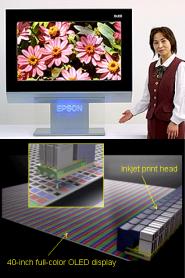 | Imagine the ideal TV set. According to TRIZ, itdoes not materially exist but, its function of broadcasting with picture and sound is performed. How is this possible? (For more information: http://www.epson.co.jp/e/newsroom/news_2004_05_18.htm) |
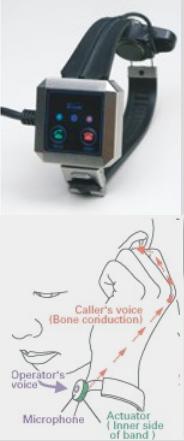 | TRIZ says the ideal phone set should not materially exist while its function of initiating and receiving information is completed. A Japanese phone firm, NTT DoCoMo, created a wristwatch phone that uses its owner's finger as an earpiece. The Finger Whisper set consists of a watch-like terminal with an embedded microphone worn on the wrist that converts voice to vibration through an actuator, and channels this vibration through the bones to the tip of the index finger. When the user inserts his finger into his ear canal, the vibration is heard as a voice. The posture of the user's hand is the same as using a cellular phone, because the microphone is located on the inner side of the wrist. The Finger Whisper also eliminates the need for buttons by using an accelerometer to detect the tapping action of fingers. Combinations of the finger tapping sequence serve as Morse code-like commands such as "talk" or "hang up." Through a five-stroke tapping sequence, approximately 30 commands can be issued.
(For more information: http://wristfashion.com/2004/07/finger-whisper.) |
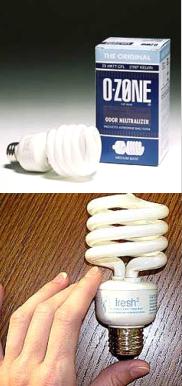 | What is an ideal air freshener for rest rooms? The freshener does not exist, but its function of eliminating odors is performed. As it turns out, using a light bulb can do the freshener's work. The new fluorescent light bulb, Fresh2, is a device that safely breaks down odors while providing light – a healthy alternative to traditional chemically based air fresheners. When you turn on the light, Fresh2 begins eliminating odors by using UV rays to trigger a photocatalytic process in the titanium oxide coating. In addition, since it's a compact fluorescent bulb, it will serve longer then conventional incandescent lamps and save money by eliminating deodorizers and reducing energy costs. (For more information: http://www.fresh2.com) |

| Washing windows is a difficult job, particularly for the exterior of tall buildings with fixed windows. Sometimes specially trained and certified people are hired for this difficult job. It is dangerous and expensive work. Is it possible to clean office windows from the inside?
Use a cleaning tool with a magnet (x-element) for cleaning the windows. One cleaning part of the tool is located on the glass surface inside the room – and has a magnet. Another part of the tool is installed on the outside glass surface – opposite the interior, also with a magnet. The parts are attached to each other by magnetic force. When inner tool moves, the exterior cleaning part moves with it. |
Therefore, the second level is improved or intensified from the previous IFR because it does not allow the introduction of new substances or parts into the system during problem solving. In this case, the system itself (using its own resources only) will eliminate the harmful function and/or undesirable negative effect while performing the useful function and/or necessary effect without complicating the system.
| Formulating the second-level IFR provides the next model of the solution: the window itself will allow for the outside cleaning of the glass surfaces from the inside of the room – without complicating the window design while performing the typical window function.
Another solution is in the second-level IFR, a rotating window frame. First, the inner surface of this window is cleaned. After the frame rotates, the outer surface can be washed from the inside of the room. |
The third level is the highest for the IFR because it formulates the model of the future solution for the zone of one element in the system. This zone is an area in which a basic physical contradiction is developed between opposing requirements on a physical level. The IFR in this case is: zone of contradiction itself (using resources of this zone only) – providing opposite macro or micro physical states or actions indicated in the formulated physical contradiction.
| Formulating the third-level IFR provides the next model of the solution: outside glass surface itself breaks down the contaminants and self-cleans. This surface does not worsen the initial glass transparence with minimal changes of the existing system. Pilkington Activ glass has a special nano-scale – extremely thin and transparent – coating of microcrystalline titanium oxide that reacts to daylight. This reaction breaks down the dirt on the glass, without a need for detergent. When water hits it, a hydrophilic effect is created so that water and dirt slide off.
The figure to the left demonstrates: |
Formulating Ideal Final Results different levels helps suggest solutions for improving the system 1) using the super-system resources (x-element), 2) using the system resources (system itself) and 3) the application of conflicting zone resources only subsystem itself. The exploration of the ideal result is constricted by the external system to just one element of the system.
The first two ideal results are technical ideal final results, because they formulate models of the future solution on the engineering or technical level.
The IFR for conflicting zones is a physical ideal final result, because this formulation is related to the physical level of the future solution. Development of the solution in accordance with the physical ideal final result often requires application of special scientific knowledge and allows getting new solution concepts at the highest possible innovation levels.
Utilization of Ideality concept and Ideal Final Result are attractive and effective TRIZ tools for problem solving. Formulation of these definitions for specific problems provides the best direction for the development of concepts that approach the ideal solution while minimizing expenses.
TRIZ methodology is based on the key concept of the Ideality and, subsequently, on the development of the Ideal Final Result. Elaboration of these statements helps the inventor quickly understand his goal during the problem-solving process, organize mental resources in the right direction and lead to strong solution concepts with the minimal waste of time and money.
What kinds of IFR (of super-system, system or sub-system) are used in the problem solving situations described below?
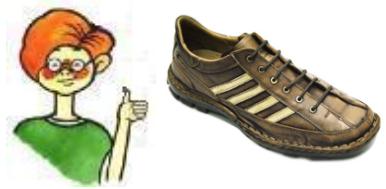 | Sometimes it is hard to bend over to tie a shoelace. How can we solve that problem? |
Shoelaces should be tied to keep your shoes on your feet. Change the shoelaces to black elastic bands. This way you never ever have to bend over to tie shoelaces again.
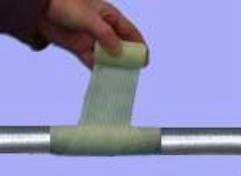 | How can you avoid leaking water due to the excessive condensation of moisture on the cold pipes of air conditioners, refrigerators or cold water pipes? |
Wrap the pipes that contain the most condensation on them with two or three layers of cotton cloth to prevent the condensation from leading to leaking.
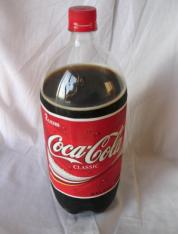 | If we do not drink a whole bottle of Coca-Cola and place it into the refrigerator, the rest of aerated beverage will lose gas and its optimal taste. How can we overcome this loss of carbonation and good taste by using ideality principle? |
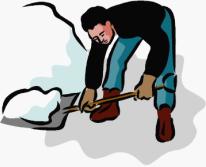 | While shoveling footpaths in winter, the snow and especially sleet sticks to the shovel. The shovel becomes heavy with the extra weight and it is harder to shovel. Cleaning the shovel every time you scoop is also an unpleasant and arduous task. How can we solve this problem approaching ideality? |
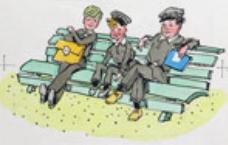 | After rain or snow, the outside bench is wet for several hours and cannot be used. How can we protect a street bench from the rain or snow and provide a dry and comfortable seat after a rain shower by applying the Ideal Final Result? |
Val Kraev is the chief TRIZ officer of the Technical Innovation Center in Worcester, MA, USA, and has contributed several very valuable case studies to The TRIZ Journal. Contact Val Kraev at kraev (at) triz.org or visit http://www.triz.org.